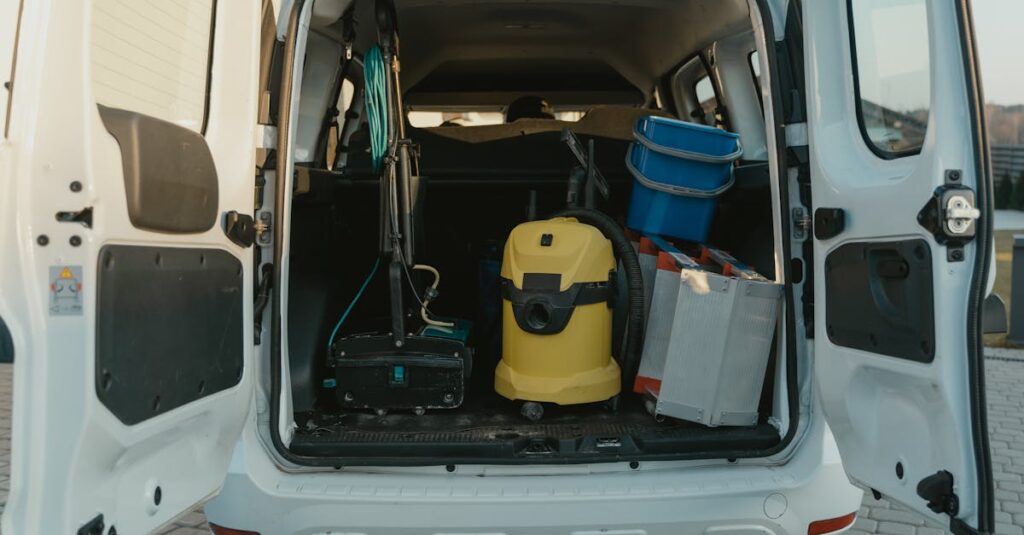Table of Contents
ToggleIn a world where germs seem to have their own social calendar, keeping spaces clean isn’t just a chore—it’s an art form. Enter the disinfection maintenance checklist, your trusty sidekick in the battle against invisible foes. Think of it as your superhero cape, ready to swoop in and save the day from the clutches of dirt and bacteria.
Importance Of Disinfection Maintenance
Disinfection maintenance plays a critical role in safeguarding health. Regular disinfection reduces the presence of harmful pathogens and contributes to a safer environment. Consistency in cleaning practices fosters trust among employees, visitors, and clients. Maintaining high standards of hygiene prevents outbreaks of infectious diseases, especially in communal spaces.
Routine disinfection also supports compliance with health regulations. Businesses adhering to these guidelines minimize legal risks associated with non-compliance. Effective disinfection practices enhance overall air quality, leading to healthier spaces. Healthy environments reduce absenteeism, positively impacting productivity and morale.
An established checklist facilitates thorough inspections. This checklist ensures nothing gets overlooked, highlighting areas requiring additional attention. Disinfection maintenance focuses on high-touch surfaces, targeting places like doorknobs and light switches. A systematic approach to maintenance establishes a culture of cleanliness that encourages proactive behavior.
Enhanced disinfection strategies are especially vital during flu season or in the presence of a contagious illness. Implementing a schedule for routine inspections keeps staff accountable and informed. Frequent evaluation of disinfection procedures allows organizations to adapt to new health guidelines.
In short, prioritizing disinfection maintenance is essential for promoting health and safety. Organizations that invest time and resources into disinfection create a dependable environment that benefits everyone. Fostering this commitment not only protects health but also enhances reputational standing within communities.
Key Components Of A Disinfection Maintenance Checklist
A well-rounded disinfection maintenance checklist encompasses various essential components that support health and safety. Understanding these key areas ensures a thorough approach to sanitation.
Surface Disinfection
Surface disinfection remains vital in controlling germ spread. Focus on high-touch areas, including doorknobs, light switches, and countertops. Implement a routine cleaning schedule for these surfaces, aiming for daily attention. Use EPA-registered disinfectants that specifically target a broad spectrum of pathogens. Confirm proper contact time for each disinfectant, ensuring effectiveness. Include a tracking system to monitor completed tasks, promoting accountability among staff.
Equipment Disinfection
Equipment disinfection protects users and maintains functionality. Pay special attention to shared tools and machinery, which can harbor harmful bacteria. Clean surfaces of equipment with appropriate disinfectants, particularly in high-traffic areas. Schedule weekly inspections to identify any overlooked points. Document disinfection activities, ensuring compliance with health guidelines. Using manufacturer recommendations for cleaning products fosters proper care and longevity of equipment.
Personal Protective Equipment (PPE)
Personal protective equipment serves as a frontline defense. Equip staff with gloves, masks, and face shields during disinfection activities to safeguard health. Train employees on the correct usage and disposal of PPE to maximize effectiveness. Regularly inspect PPE for damage, ensuring it offers adequate protection. Establish protocols for replacing worn or ineffective gear, contributing to overall safety during disinfection procedures. Create awareness about the importance of PPE in maintaining a safe work environment.
Creating An Effective Disinfection Maintenance Checklist
An effective disinfection maintenance checklist requires a strategic approach. Identifying needs plays a critical role in this process.
Assessing Your Needs
Determining specific needs involves evaluating the type of space and the level of foot traffic. High-traffic areas like restrooms and break rooms require more frequent disinfection. Understanding the nature of the activities conducted in each area also helps prioritize tasks. Identifying frequently touched surfaces ensures thorough coverage. Lastly, reviewing past incidents of illness can guide the frequency and intensity of disinfection efforts.
Customizing The Checklist
Customizing the checklist ensures it meets the unique demands of each environment. Start by incorporating feedback from staff, as they offer valuable insights into high-use items. Including specific tasks for various zones allows for targeted actions. Established guidelines, such as those from the CDC, provide solid reference points. Creating a visual layout, like a matrix, enhances usability and understanding. Lastly, consider regular updates for evolving health guidelines, especially during flu season or outbreaks, to maintain effectiveness.
Best Practices For Disinfection Maintenance
Implementing best practices in disinfection maintenance ensures environments remain safe and healthy. Establishing routine protocols is essential for achieving optimal results.
Frequency Of Disinfection
Frequency significantly impacts the effectiveness of disinfection efforts. High-traffic areas require daily disinfection, while less frequented spaces may only need attention weekly. Increased frequency is necessary during flu seasons or when outbreaks occur. Facilities should prioritize high-touch surfaces, including doorknobs and light switches, for daily disinfecting. Adapting schedules based on physical activities and usage patterns enhances overall cleanliness. Regular assessments of foot traffic can inform necessary adjustments, promoting consistent adherence to guidelines.
Training Staff On Protocols
Training staff on disinfection protocols plays a crucial role in maintaining high standards. Programs focusing on proper techniques, safety measures, and best practices ensure effective execution. Staff should understand the importance of using EPA-registered disinfectants and wearing appropriate personal protective equipment. Clear communication about the significance of routine checks fosters accountability. Holding mock drills can enhance preparedness and reinforce retention of protocols. Regular feedback sessions create an opportunity for staff to voice concerns and suggestions, ultimately leading to continuous improvement in disinfection practices.
Conclusion
A disinfection maintenance checklist is vital for any organization aiming to create a safe and healthy environment. By establishing clear protocols and regular routines, businesses can significantly reduce the risk of infectious diseases and enhance overall well-being.
Prioritizing high-touch areas and using effective disinfectants not only protects health but also builds trust within the community. Training staff on best practices ensures everyone is equipped to contribute to a culture of cleanliness.
Ultimately, consistent disinfection efforts reflect an organization’s commitment to safety and hygiene, fostering a reliable atmosphere that benefits employees and clients alike.







